Scroll of the Song of Everlasting Sorrow (长恨歌图卷)
This Edo-period handscroll by Japanese painter Kanō Sansetsu (狩野山雪, 1590–1651)is a masterful visual adaptation of Bai Juyi’s (白居易) Tang-dynasty narrative poem Changhenge (长恨歌), depicting the tragic love story of Emperor Xuanzong (唐玄宗) and Yang Guifei (杨贵妃). The two-part scroll (total length ~20 meters) is housed in the Chester Beatty Library, Ireland, and represents a unique fusion of Chinese literary tradition and Japanese artistic interpretation.
Key Features:
- Structure & Narrative:
- Volume I (上卷): Begins with “汉皇重色思倾国” (The Han emperor sought beauty that could topple kingdoms) and culminates in Yang Guifei’s execution at Mawei Slope (马嵬坡). Key scenes include the opulent “Spring Bath at Huaqing Pool” (春寒赐浴华清池) and the chaotic “An Lushan Rebellion” (安史之乱).
- Volume II (下卷): Focuses on the emperor’s grief, from “君王掩面救不得” (The monarch could not save her) to the poignant finale “此恨绵绵无绝期” (This sorrow endures beyond time).
- Artistic Hybridity:
- Sansetsu blends Chinese literati aesthetics (e.g., meticulous architectural details in jiehua 界画 style) with Japanese decorative boldness—vivid mineral pigments (e.g., gold leaf for courtly opulence) and dramatic compositions (e.g., the violent “Mawei Incident” rendered with stark contrasts).
- The scroll’s “map-like” annotations (e.g., labeled landmarks like “Li Palace” 骊宫) merge poetic imagery with cartographic precision.
- Cultural & Historical Context:
- 狩野派 (Kanō School) Legacy: As a member of Japan’s dominant artistic dynasty (active 15th–19th centuries), Sansetsu infused the scroll with motifs catering to samurai patrons—dynamic battle scenes and symbolic flora (e.g., wilting peonies暗示贵妃之死).
- Scholarly Rediscovery: Misattributed as a Chinese work until the 1980s, Japanese scholar Kawaguchi Hisao (川口久雄) decoded its textual-artistic interplay, linking scenes to Bai Juyi’s verses and Tang-Song literary tropes.
- Controversies & Innovations:
- The colophon “狩野氏累世山雪始圖之” asserts Sansetsu’s originality, rejecting earlier fragmented depictions of the story.
- Anachronisms abound: Ming-style architecture, Japanese facial features in court figures, and omission of Yang’s controversial past (e.g., her prior marriage).
Translation of Key Terms:
- 长恨歌图卷: Scroll of the Song of Everlasting Sorrow
- 狩野派: Kanō School, a Japanese artistic lineage serving military elites.
- 界画舆图: A hybrid of ruled-line painting and annotated cartography.
Legacy:
This scroll bridges Tang poetry and Edo visual culture, offering insights into Sino-Japanese artistic exchange. Its digitization by the Chester Beatty Library allows global access to its haunting beauty.

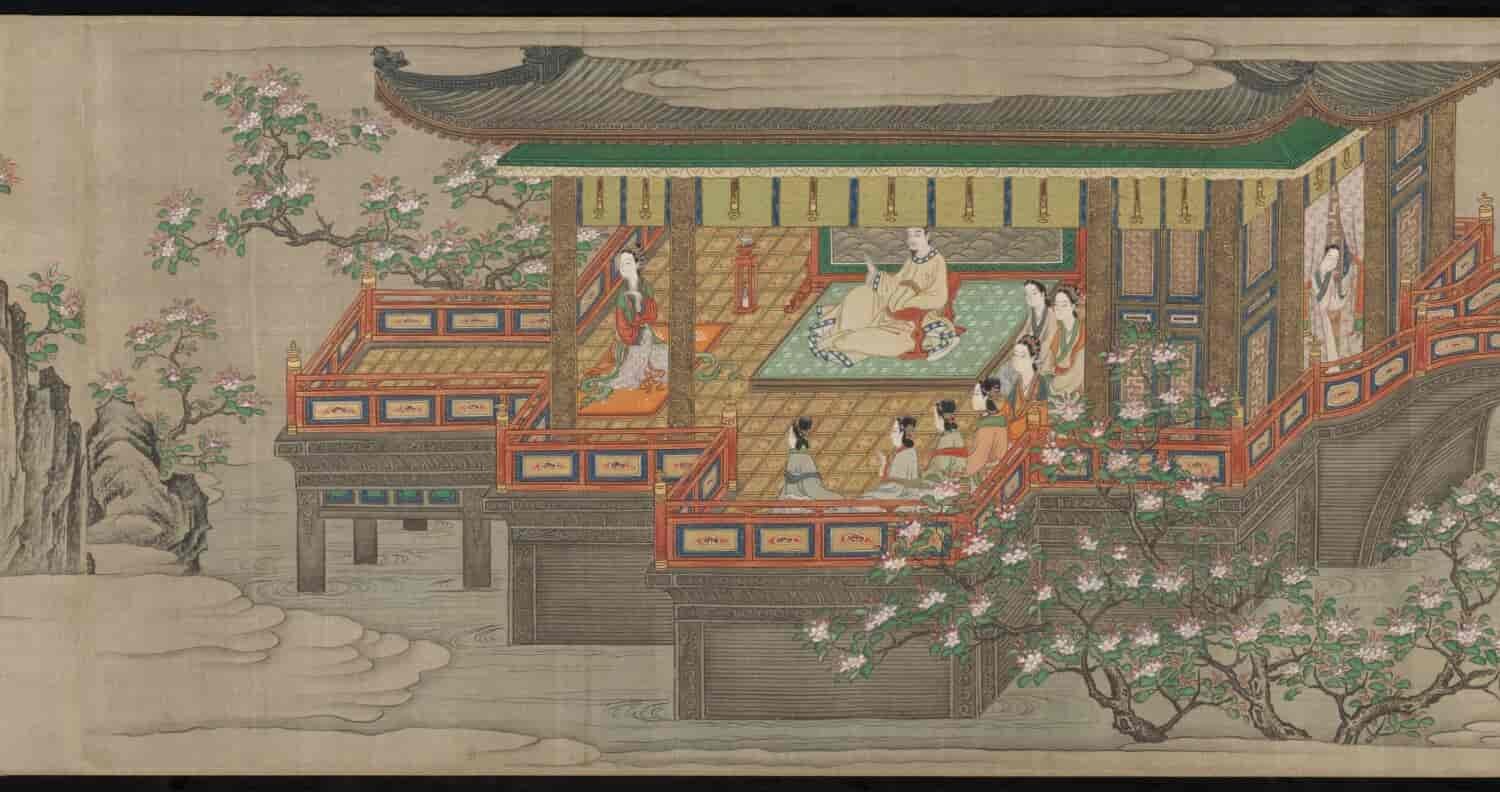
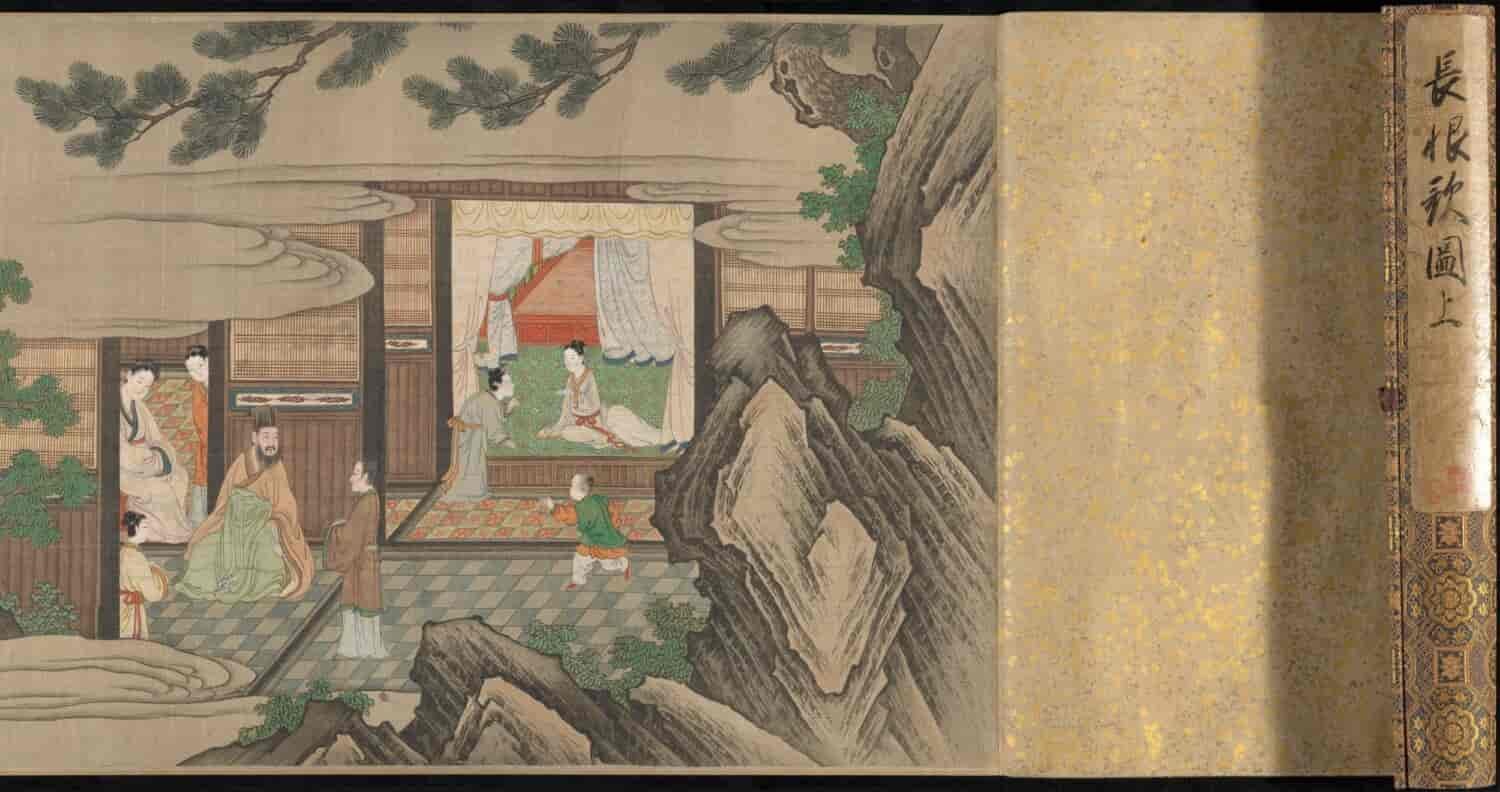
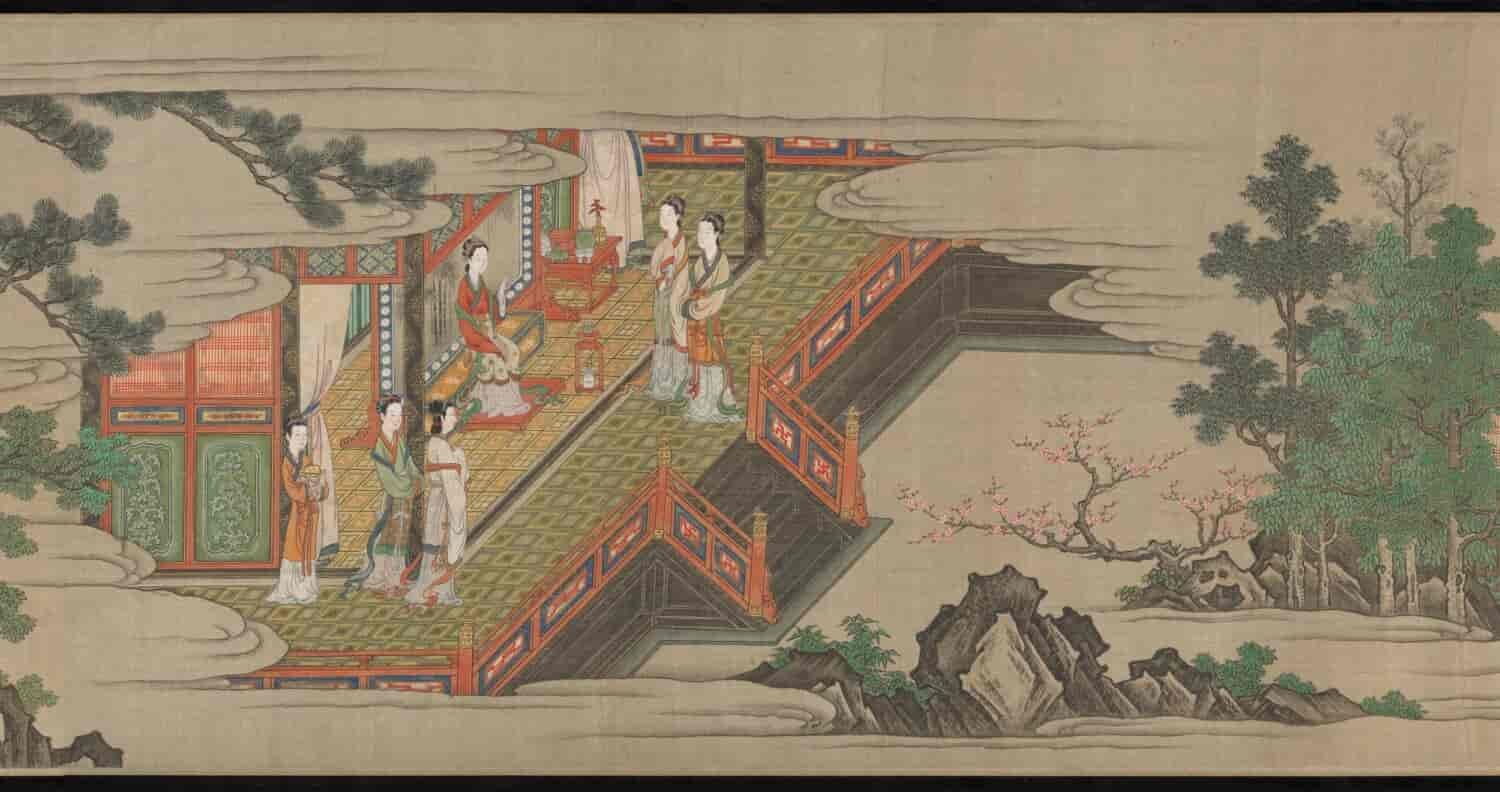
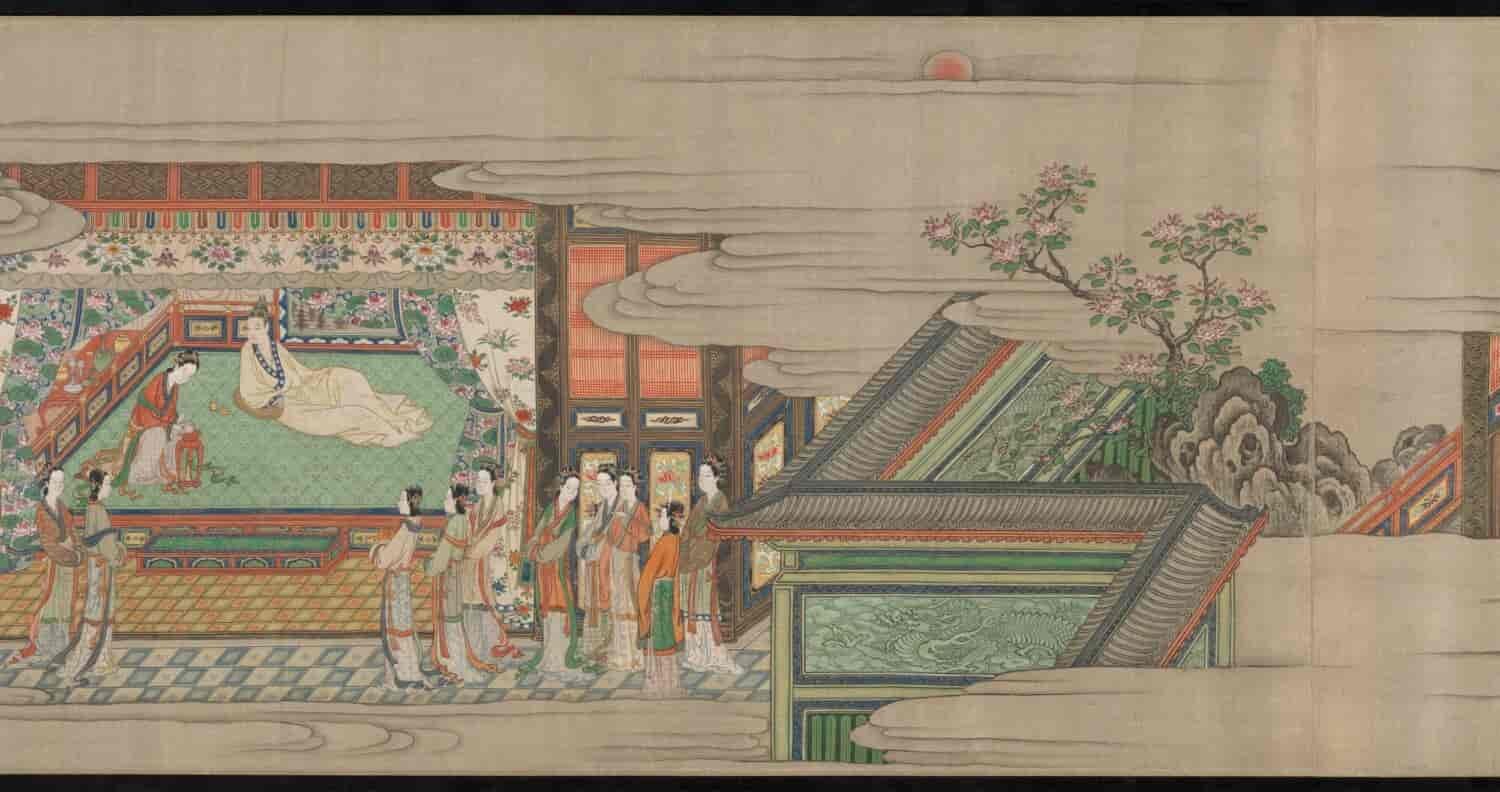
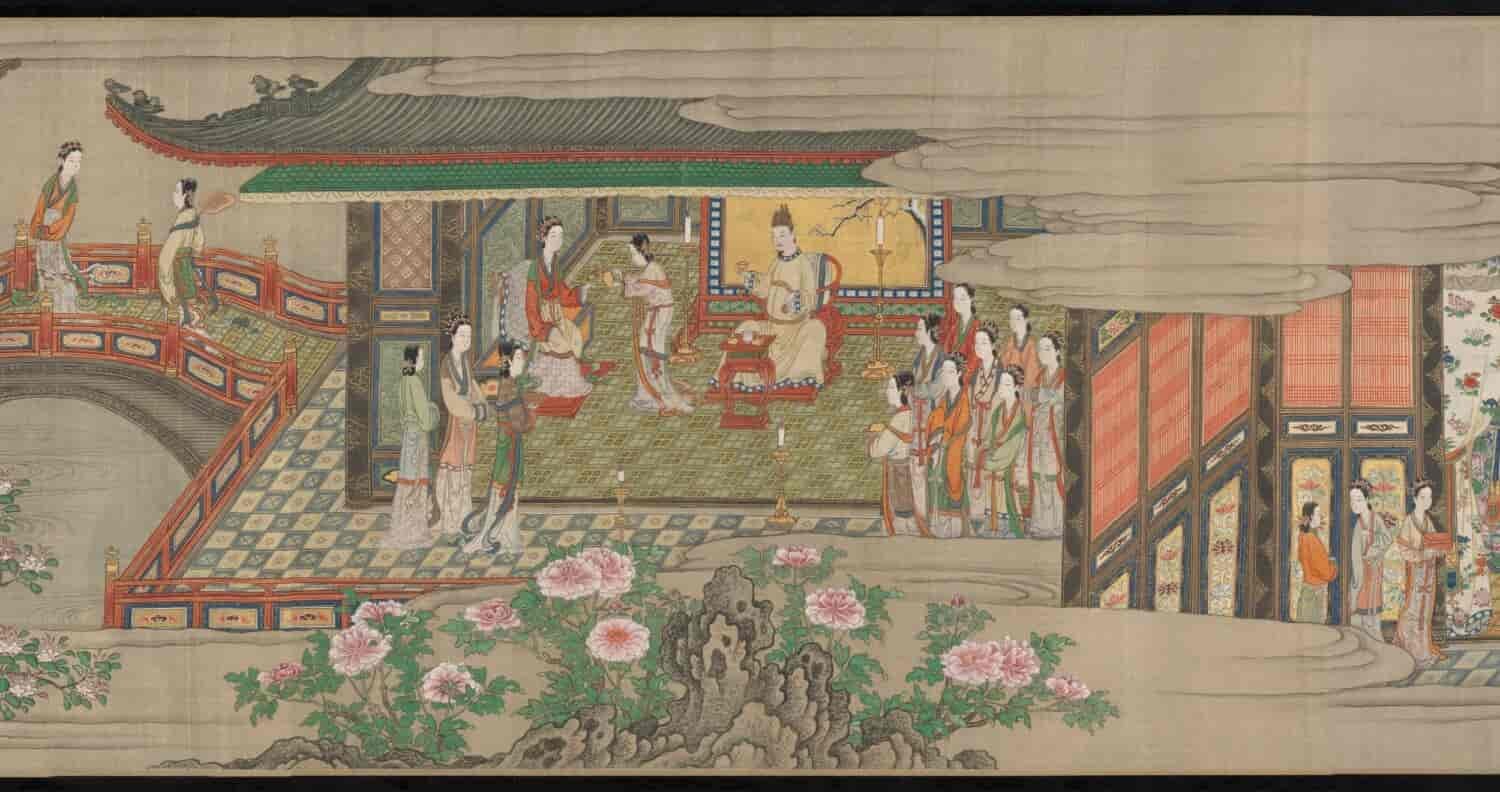
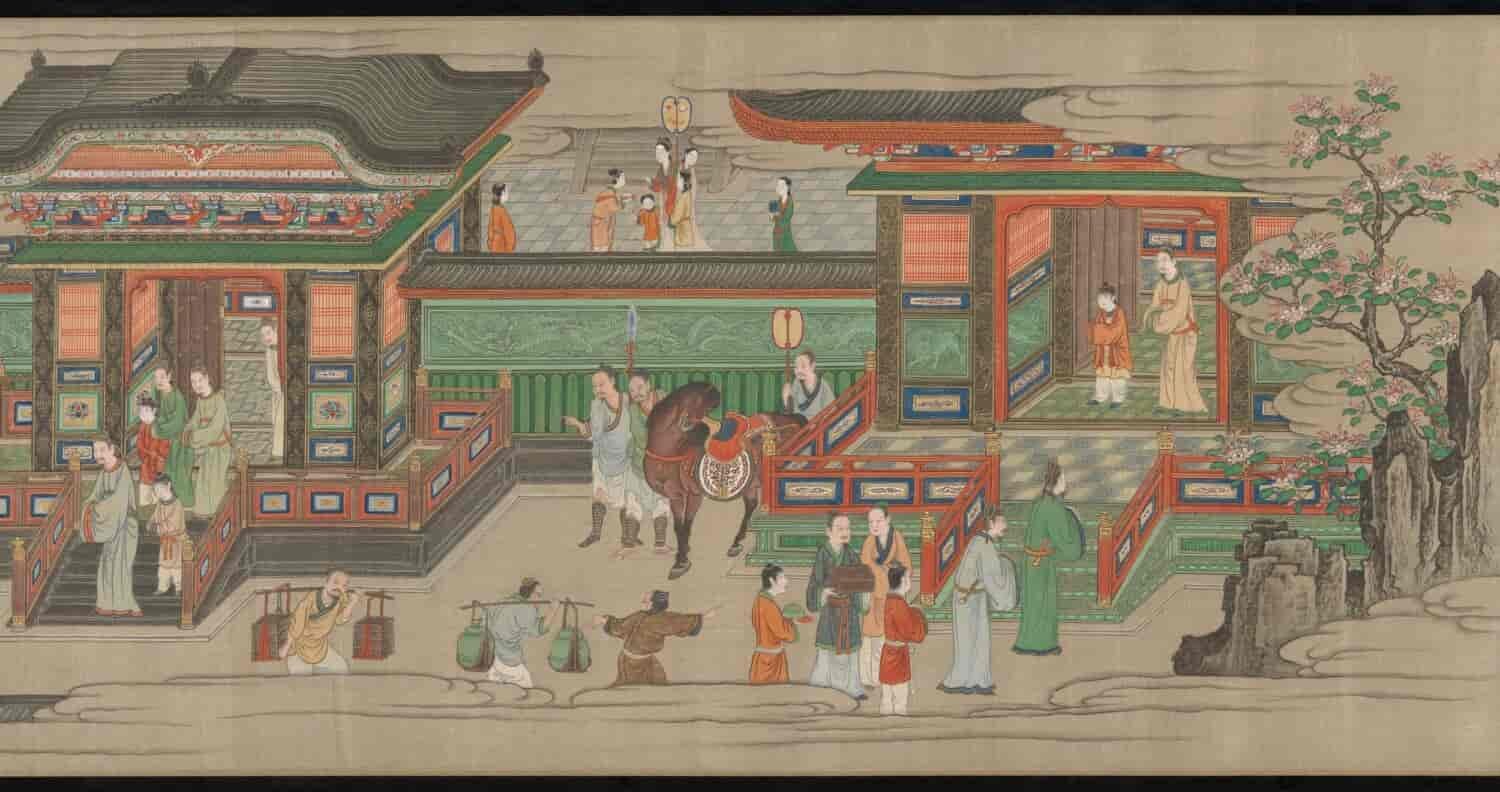
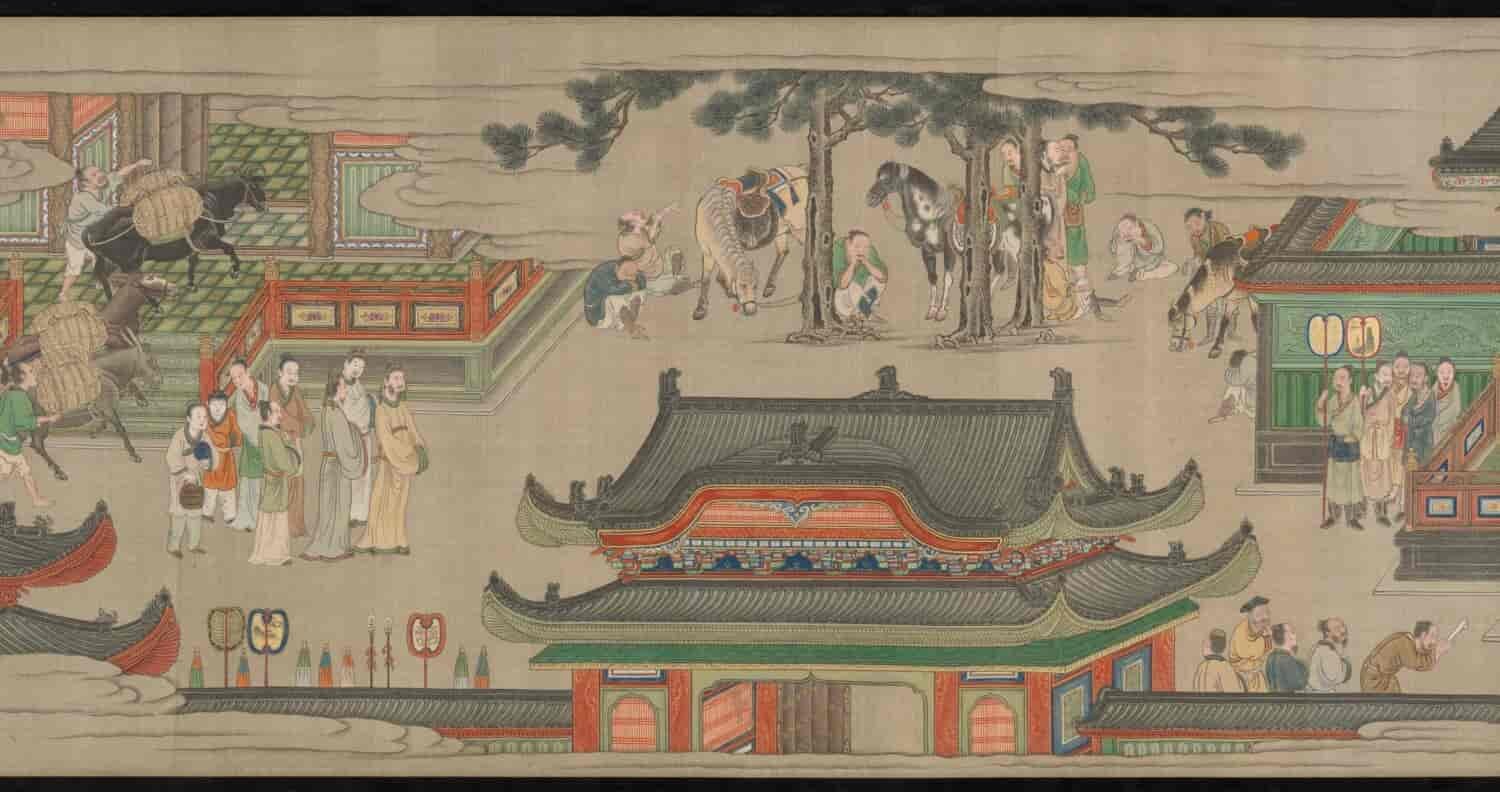
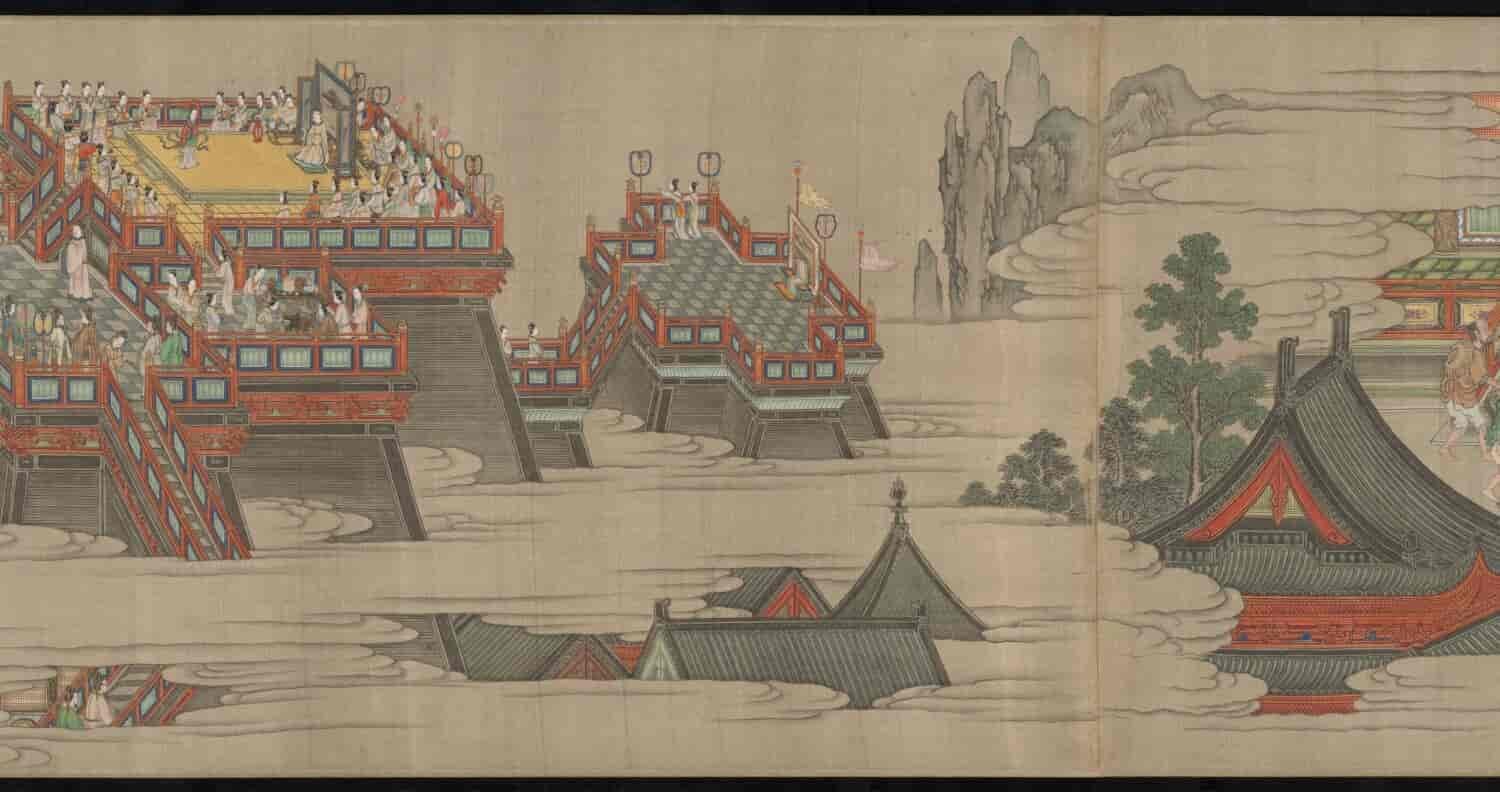
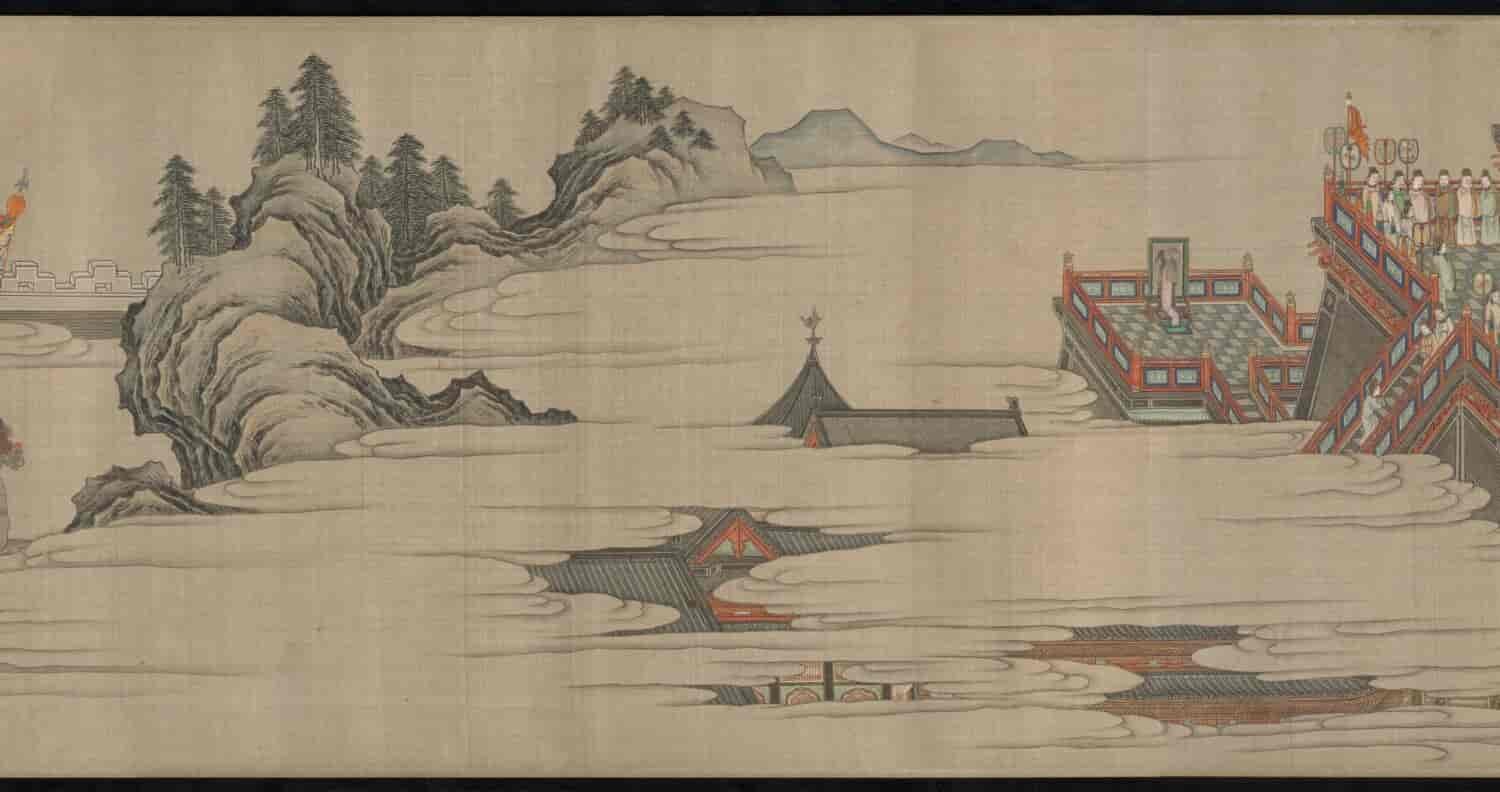
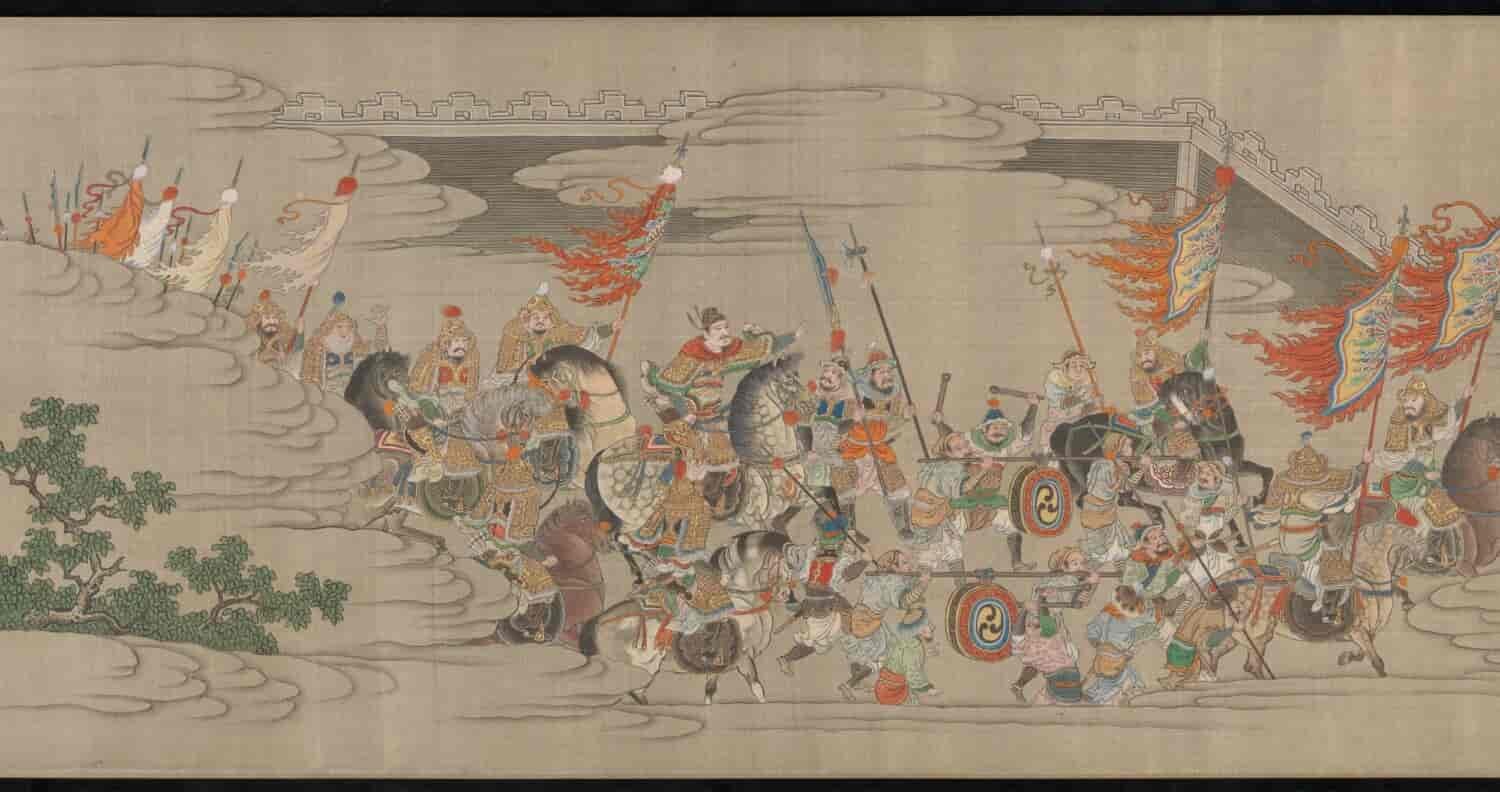
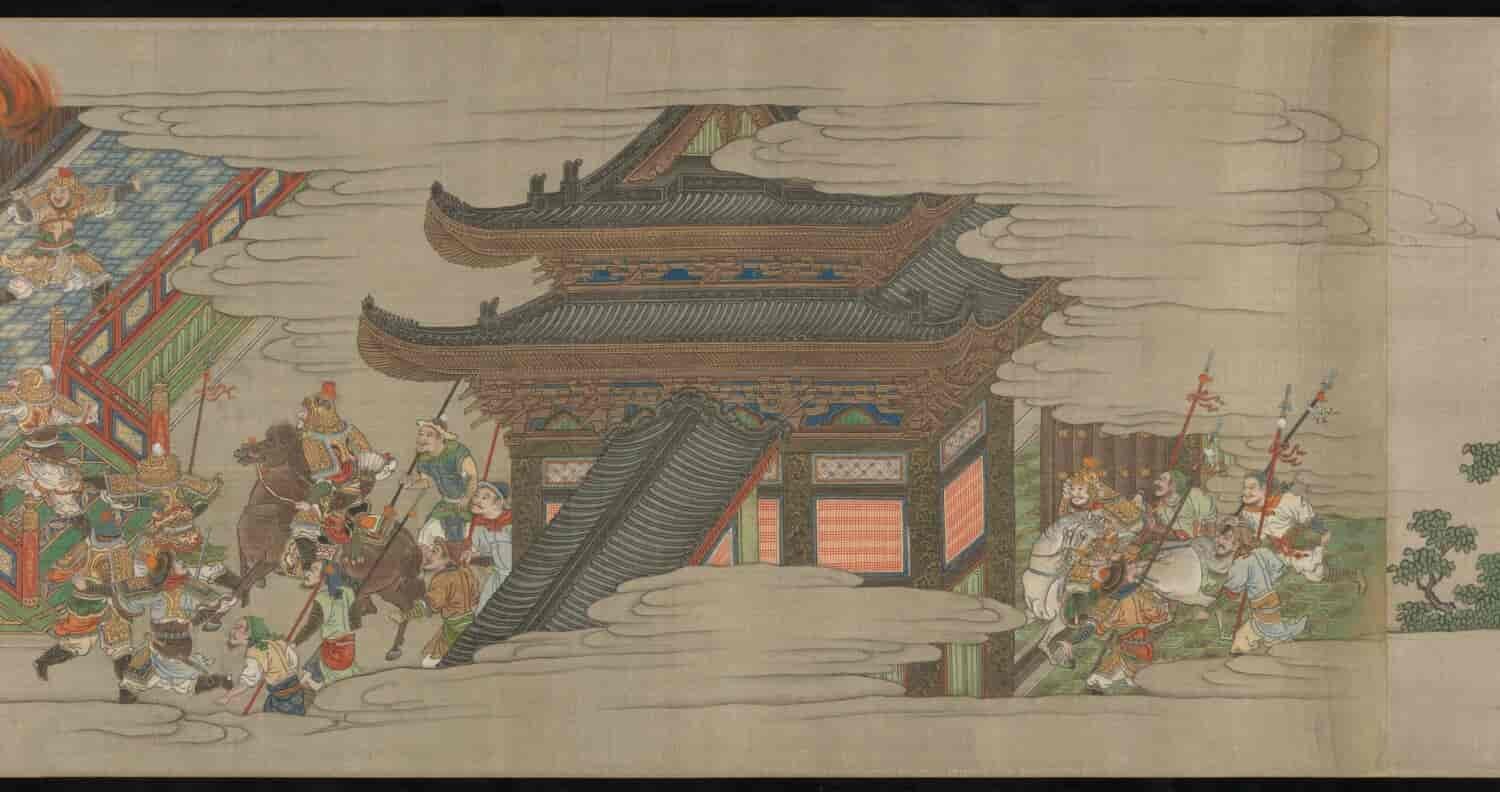
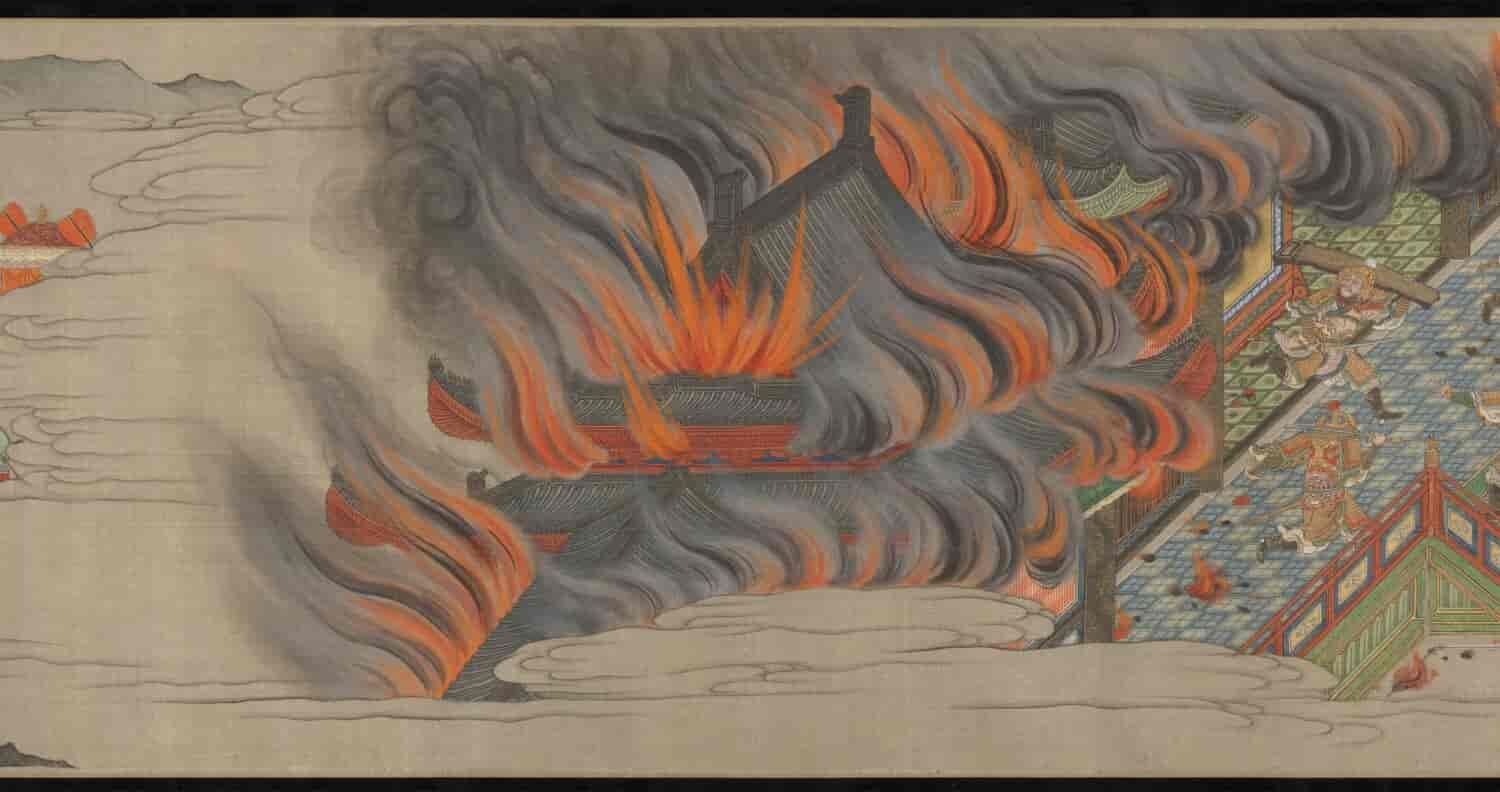
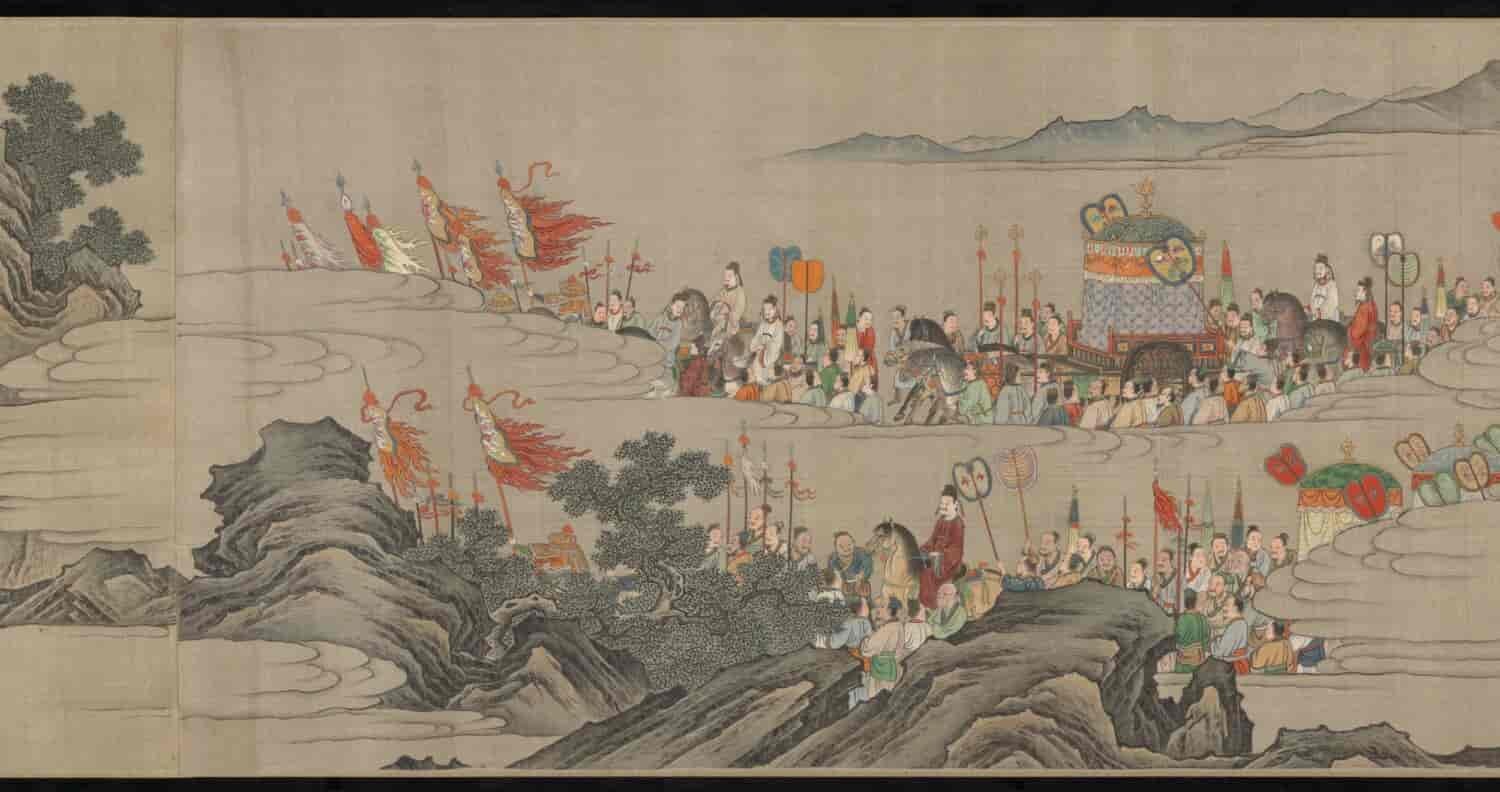
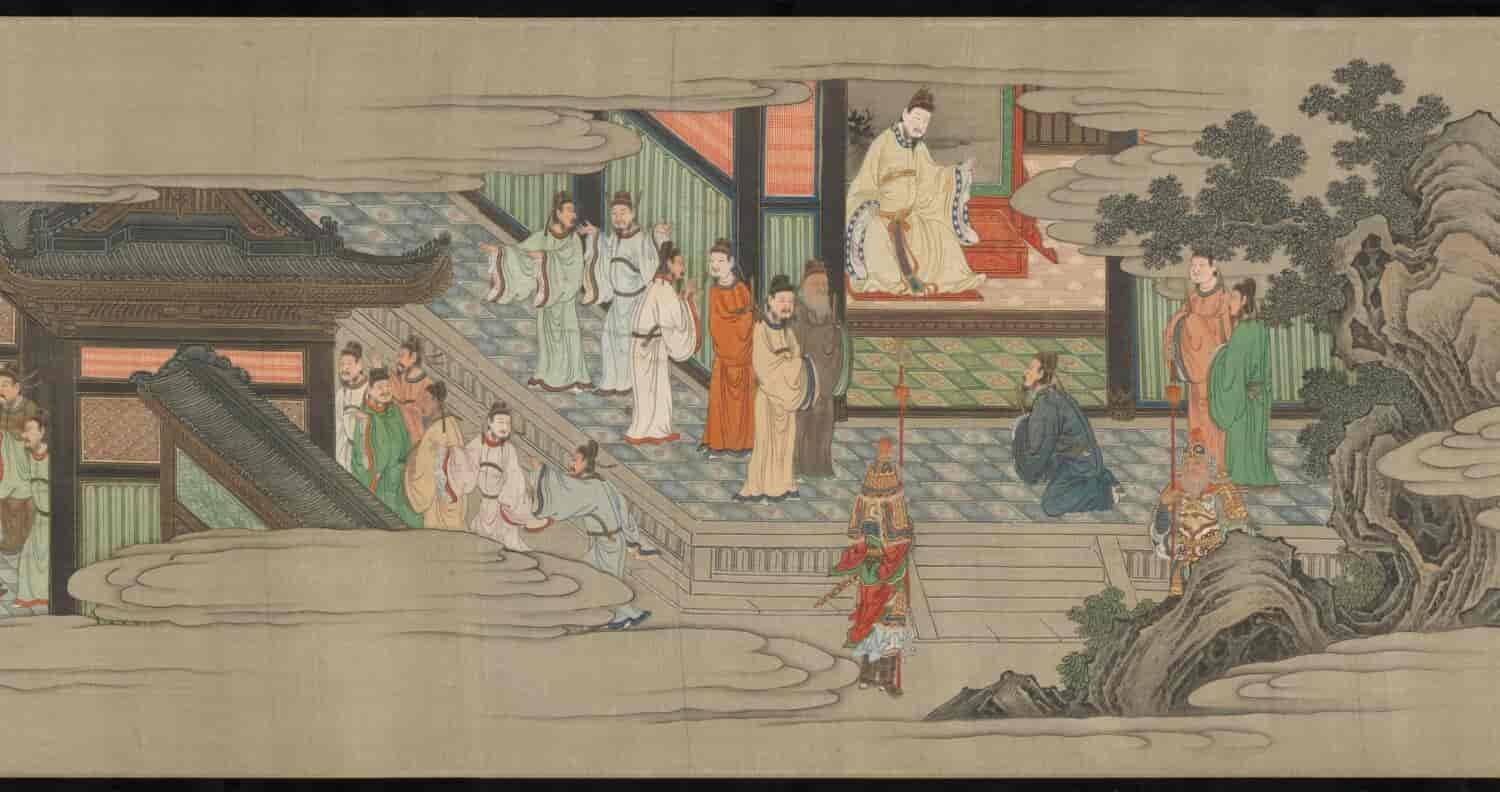
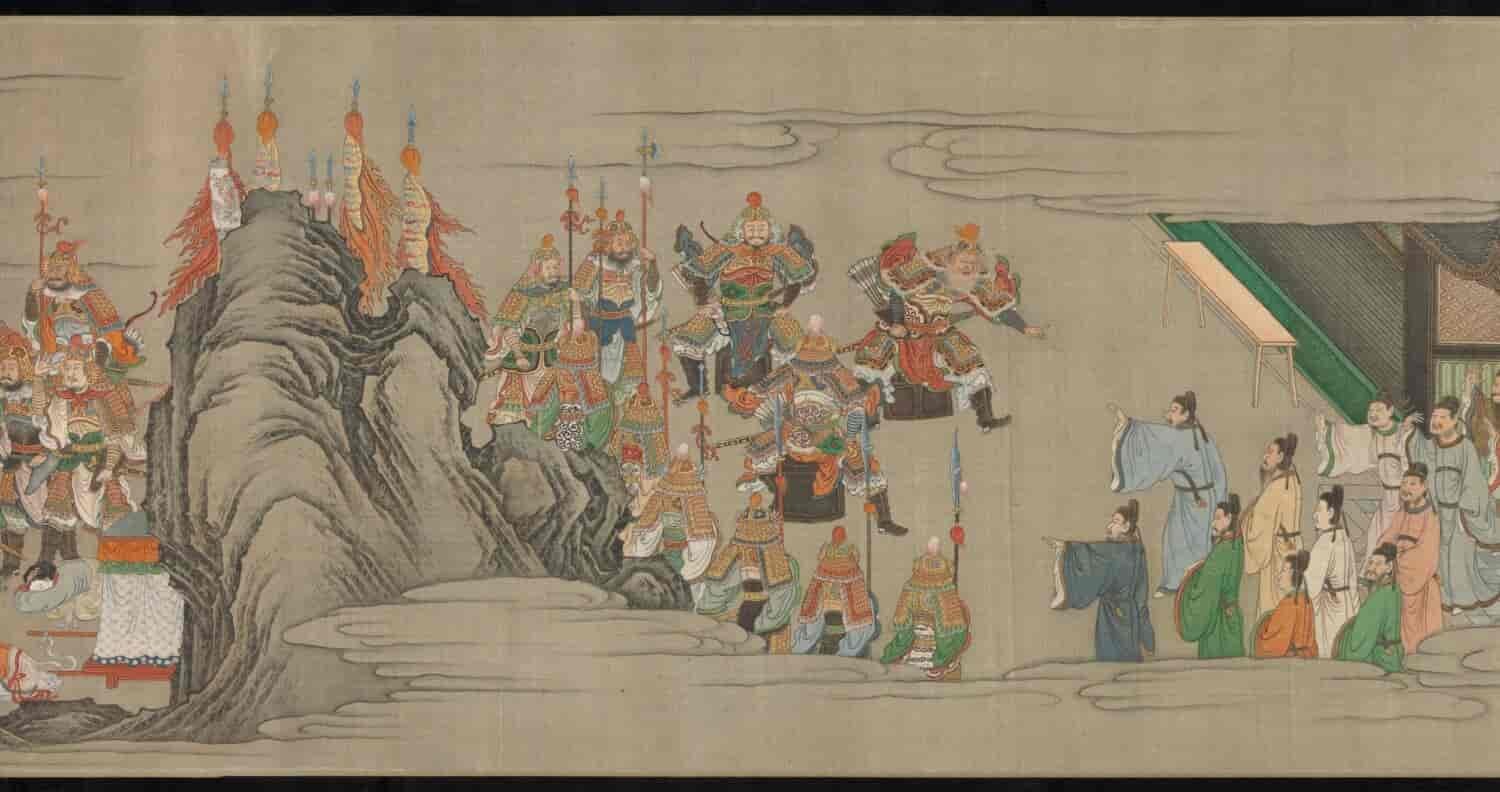
评价
目前还没有评价